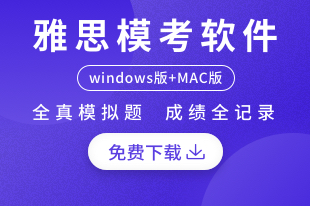【小站出品】雅思阅读机经真题解析-滑石粉
- 2016年11月25日16:22 来源:小站教育作者:小站雅思编辑
- 参与(12) 阅读(40381)
小站独家,雅思阅读机经真题解析。一切患有雅思阅读刷题强迫症的烤鸭,请看这里。小站精心整理了一批雅思阅读机经真题。如果你的剑桥雅思阅读已是烂熟于心,那么这一系列的雅思阅读机经真题真的很适合你,搭配上绝对原创的讲解,还有全文的中文翻译,这等阅读大餐,还等什么!
Talc Powder
A Peter Brigg discovers how talc from Luzenac's Trimouns in France find its way into food and agricultural products - from chewing gum to olive oil. High in the French Pyrenees, some 1,700m above sea level, lies Trimouns, a huge deposit of hydrated magnesium silicate - talc to you and me. Talc from Trimouns, and from ten other Luzenac mines across the globe, is used in the manufacture of a vast array of everyday products extending from paper, paint and plaster to cosmetics, plastics and car tyres. And of course there is always talc's best known end use: talcum powder for babies1 bottoms. But the true versatility of this remarkable mineral is nowhere better displayed than in its sometimes surprising use in certain niche markets in the food and agriculture industries.
B Take, for example, the chewing gum business. Every year, Talc de Luzenac France - which owns and operates the Trimouns mine and is a member of the international Luzenac Group (art of Rio Tinto minerals) supplies about 6,000 tones of talc to chewing gum manufacturers in Europe. "We've been selling to this sector of the market since the 1960s," says Laurent Fournier, sales manager in Luzenac's Specialties business unit in Toulouse. "Admittedly, in terms of our total annual sales of talc, the amount we supply to chewing gum manufacturers is relatively small, but we see it as a valuable niche market: one where customers place a premium on securing supplies from a reliable, high quality source. Because of this, long term allegiance to a proven suppler is very much a feature of this sector of die talc market." Switching sources - in the way that you might choose to buy, say, paperclips from Supplier A rather than from Supplier B - is not an easy option for chewing gum manufacturers." Fournier says. "The cost of reformulating is high, so when customers are using a talc grade that works, even if it's expensive, they are understandably reluctant to switch."
C But how is talc actually used in the manufacture of chewing gum? Patrick Delord, an engineer with a degree in agronomics, who has been with Luzenac for 22 years and is now senior market development manager, Agriculture and Food, in Europe, explains that chewing gums has four main components. "The most important of them is the gum base," he says. "It's the gum base that puts the chew into chewing gum. It binds all the ingredients together, creating a soft, smooth texture. To this the manufacturer then adds sweeteners, softeners and flavourings. Our talc is used as a filler in the gum base. The amount vanes between, say, ten and 35 per cent, depending on the type of gum. Fruit flavoured chewing gum, for example, is slightly acidic and would react with the calcium carbonate that the manufacturer might otherwise use as a filler. Talc, on the other hand, makes an ideal filler because it's non-reactive chemically. In the factory, talc is also used to dust the gum base pellets and to stop the chewing gum sticking during the lamination and packing process," Delord adds.
D The chewing gum business is, however, just one example of talc's use in the food sector. For the past 20 years or so, olive oil processors in Spain have been taking advantage of talc's unique characteristics to help them boost the amount of oil they extract from crushed olives According to Patrick Delord, talc is especially useful for treating what he calls "difficult" olives. After the olives are harvested - preferably early in the morning because their taste is better if they are gathered in the cool of the day they are taken to the processing plant. There they arc crushed and then stirred for 30-45 minutes. In the old days, the resulting paste was passed through an olive press but nowadays it's more common to add water and (K-6IH) the mixture to separate the water and oil from the solid matter The oil and water are then allowed to settle so that the olive oil layer can be )and bottled. “Difficult” olives are those that are more reluctant than the norm to yield up their full oil content. This may be attributable to the particular species of olive, or to its water content and the time of year the olives arc collected - at the beginning and the end of the season their water content is often either too high or too low. These olives are easy to recognize because they produce a lot of extra foam during the stirring process, a consequence of an excess of a fine solid that acts as a natural emulsifier. The oil in this emulsion is lost when the water is disposed of. Not only that, if the waste water is disposed of directly into local fields - often the case in many smaller processing operations - the emulsified oil may take some time to biodegrade and so be harmful to the environment.
E "If you add between a half and two percent of talc by weight during the stirring process, it absorbs the natural emulsifier in the olives and so boosts the amount of oil you can extract," says Delord. "In addition, talc's flat, 'platey' structure helps increase the size of the oil droplets liberated during stirring, which again improves the yield. However, because talc is chemically inert, it doesn't affect the color, taste, appearance or composition of the resulting olive oil."
F If the use of talc in olive oil processing and in chewing gum is long established, new applications in the food and agriculture industries arc also constantly being sought by Luzenac. One such promising new market is fruit crop protection, being pioneered in the US. Just like people, fruit can get sunburned. In fact, in very sunny regions up to 45 per cent of a typical crop can be affected by heat stress and sunburn However, in the case of fruit, it's not so much the ultra violet rays which harm the crop as the high surface temperature that the sun's rays create.
G To combat this, farmers normally use either chemicals or spray a continuous fine canopy of mist above the fruit frees or bushes. The trouble is, this uses a lot of water - normally a precious commodity in hot, sunny areas - and it is therefore expensive. What's more, the ground can quickly become waterlogged. "So our idea was to coat the fruit with talc to protect it from the sun," says Greg Hunter, a marketing specialist who has been with Luzenac for ten years. "But to do this, several technical challenges had first to be overcome. Talc is very hydrophobic: it doesn't like water. So in order to have a viable product we needed a wettable powder - something that would go readily into suspension so that it could be sprayed onto the fruit. It also had to break the surface tension of the cutin (the natural waxy, waterproof layer on the fruit) and of course it had to wash off easily when the fruit was harvested. No-one's going to want an apple that's covered in talc."
H Initial trials in the state of Washington in 2003 showed that when the product was sprayed onto Granny Smith apples, it reduced their surface temperature and lowered the incidence of sunburn by up to 60 per cent. Today the new product, known as Invelop Maximum SPF, is in its second commercial year on the US market. Apple growers are the primary target although Hunter believes grape growers represent another sector with long term potential. He is also hopeful of extending sales to overseas markets such as Australia, South America and southern Europe.
Question 27-32
Use the information in the passage to match each use of tale power with correct application from A. B or C. Write the appropriate letters A-C in boxes 27-32 on your answer sheet.
NB you may use any letter more than once.
A. Fruit protection
B. Chewing gum business
C. Olive oil extraction
27 Talc is used to increase the size of drops.
28 Talc is applied to reduce foaming.
29 Talc is employed as a filler of base.
30 Talc is modified and prevented sunburn.
31 Talc is added to stop stickiness.
32 Talc is used to increase production.
Questions 33-38
Complete the following summary of the paragraphs of Reading Passage, using no more than two words from the Reading Passage for each answer. Write your answers in boxes 33-38 on your answer sheet.
Spanish olive oil industry has been using talc in oil extraction process for about____33____years. It is useful in dealing with difficult olives which often produce high amount of____34____because of the high content of solid materials. When smaller factories release____35____, it could be____36____to the environment because it is hard to____37____and usually lakes lime as it contains emulsified oil. However, talc power added in the process is able to absorb the emulsifier oil. It improves the oil extraction production, because with aid of talc powder, size of oil____38____increased.
Question 39-40
Answer the questions below.
Choose NO MORE THAN THREE WORDS from the passage for each answer.
Write your answers in boxes 39-40 on your answer sheet.
39 In which process is talc used to dear the stickiness of chewing gum?
40 Which group of farmers does Invelop intend to target in a long view?
文章题目:滑石粉
篇章结构
|
体裁 |
论说文 |
|
题目 |
滑石粉 |
|
结构 |
(一句话概括每段大意) A段:滑石粉的主要用途 B段:滑石粉在口香糖市场中的用途 C段: 滑石粉在口香糖制作中的原理 D段: 滑石粉在其他食品中的应用 E段:滑石粉在食品中的应用原理 F段:滑石粉在水果保护中的应用 G段:滑石粉对水果的保护作用原理 H段: 水果保护作用的市场拓展 |
试题分析
题目类型:搭配题
解题思路:可以先去定位A,B,C三个选项中内容所对应的文段,然后从27-32中的题干去搜寻相符合的,而不是一个一个题目去找,这样会比较节省时间
|
题号 |
定位词 |
文中对应点 |
题目解析 |
|
27 |
Increase,size, |
E段第三句话 |
根据文章大意将C选项个橄榄油提取的内容定位到E段,第三句话,提到滑石粉的结构有助于增加挥发油滴的体积,故可以判断27题与C相连 |
|
28 |
Foam |
D段倒数第四句话 |
根据关键词定位到D段,原文中提到搅拌过程中会产生很多泡沫,后面提出因此要加上滑石粉来减少泡沫。 |
|
29 |
Base,fill |
C段倒数第8行 |
根据关键词定位到C段原文“our talc is used as a filler in the gum base”。故是关于口香糖行业的内容,选B |
|
30 |
Sun,fruit |
G段第四句话 |
根据sunburn这个词可以定位到G段,第四句表明滑石粉可以起到保护水果免受日晒的作用,故选A |
|
31 |
Sticking |
C段最后一句话 |
根据statement中的”stickness“这个词可以定位到C段结尾部分,原文说滑石粉可以防止口香糖在挤压过程中与包装粘在一起,所以跟statement表述的意思是一致的 |
|
32 |
boost,amount |
E段第一句话 |
文章中提到可以”boosts the amount of oil you can extract”跟题干上表述一直 |
Question 33-38
题目类型:总结题
|
题号 |
定位词 |
文中对应点 |
题目解析 |
|
33 |
spanish olive oil |
D段第二句话 |
根据spanish olive oil定位到D段,文章提到橄榄油制造利用滑石粉已经二十年。 |
|
34 |
High amount of |
D段倒数第四句话 |
根据关键词定位到D段,原文中提到搅拌过程中会产生很多泡沫,后面提出因此要加上滑石粉来减少泡沫。所以填“foam” |
|
35 |
Factory |
D段倒数第二句话 |
根据关键词定位到D段结尾,原文提到“waste water” |
|
36 |
Environment |
D段最后一句话 |
根据关键词定位到D段结尾,文中提到这种乳化油分解对环境的影响是“harmful”的 |
|
37 |
同上 |
D段最后一句话 |
问harmful的原因。原文有明确提出,是由于“hard to biodegrade”,难以生物降解 |
|
38 |
Size,increase |
E段第三句话 |
文章说到在橄榄油提取过程中,挥发的油滴体积会增加,“increase the size of the oil droplets” |
Question 39-40
题目类型:问答题
|
39 |
Stickiness,chewing gun |
C段最后一句话 |
题目中问到在哪一个过程中滑石粉是用于来减少口香糖粘度的,这个跟上面第31题比较近似,可以先定位到C段结尾,可看到文章中明确给出是“during the lamination and packing process” |
|
40 |
Invelop,long-term potential |
H段倒数第二句 |
S首先根据“invelop”定位到H段,题目问哪个组织的种植者是invelop打算长期去关注投资的,倒数第二句给出答案是“grape grower” |
参考答案:
|
Version 24109 主题 滑石粉 |
|||||
|
27 |
C |
28 |
C |
29 |
B |
|
30 |
A |
31 |
B |
32 |
C |
|
33 |
20 |
34 |
foam |
35 |
waste water |
|
36 |
harmful |
37 |
biodegrade |
38 |
droplets |
|
39 |
Lamination and packing |
40 |
Grape growers |
|
|











































